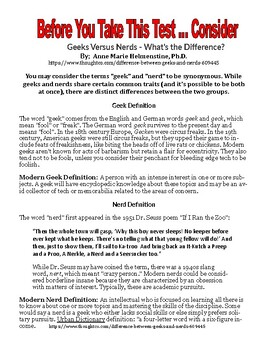CALCULUC FINAL EXAM and ANSWER KEY For Nerds and Geeks 45-QUESTIONS
BrainBanger
251 Followers
Grade Levels
8th - 12th, Higher Education, Adult Education, Homeschool
Resource Type
Standards
NGSSMS-ESS3-2
NGSSMS-ESS3-1
NGSSHS-ESS3-3
NGSSHS-ESS3-2
NGSSMS-ESS3-5
Formats Included
- PDF
Pages
27 pages
BrainBanger
251 Followers
Description
*****STAR SALE $19.99 CALCULUC FINAL EXAM and ANSWER KEY for Nerds and Geeks 45-QUESTIONS Why Should You Take THIS Calculus AB Test? While this test does not cover every possible problem or topic that you will encounter in calculus, it gives you a very good idea of what you are expected to know and also helps you to identify any gaps in your understanding, if there is any. BONUS NERD PUZZLE INCLUDED Hurry! Limited Time Offer *****STAR SALE $19.99
Total Pages
27 pages
Answer Key
Included
Teaching Duration
3 hours
Report this resource to TPT
Reported resources will be reviewed by our team. Report this resource to let us know if this resource violates TPT’s content guidelines.
Standards
to see state-specific standards (only available in the US).
NGSSMS-ESS3-2
Analyze and interpret data on natural hazards to forecast future catastrophic events and inform the development of technologies to mitigate their effects. Emphasis is on how some natural hazards, such as volcanic eruptions and severe weather, are preceded by phenomena that allow for reliable predictions, but others, such as earthquakes, occur suddenly and with no notice, and thus are not yet predictable. Examples of natural hazards can be taken from interior processes (such as earthquakes and volcanic eruptions), surface processes (such as mass wasting and tsunamis), or severe weather events (such as hurricanes, tornadoes, and floods). Examples of data can include the locations, magnitudes, and frequencies of the natural hazards. Examples of technologies can be global (such as satellite systems to monitor hurricanes or forest fires) or local (such as building basements in tornado-prone regions or reservoirs to mitigate droughts).
NGSSMS-ESS3-1
Construct a scientific explanation based on evidence for how the uneven distributions of Earth’s mineral, energy, and groundwater resources are the result of past and current geoscience processes. Emphasis is on how these resources are limited and typically non-renewable, and how their distributions are significantly changing as a result of removal by humans. Examples of uneven distributions of resources as a result of past processes include but are not limited to petroleum (locations of the burial of organic marine sediments and subsequent geologic traps), metal ores (locations of past volcanic and hydrothermal activity associated with subduction zones), and soil (locations of active weathering and/or deposition of rock).
NGSSHS-ESS3-3
Create a computational simulation to illustrate the relationships among the management of natural resources, the sustainability of human populations, and biodiversity. Examples of factors that affect the management of natural resources include costs of resource extraction and waste management, per-capita consumption, and the development of new technologies. Examples of factors that affect human sustainability include agricultural efficiency, levels of conservation, and urban planning. Assessment for computational simulations is limited to using provided multi-parameter programs or constructing simplified spreadsheet calculations.
NGSSHS-ESS3-2
Evaluate competing design solutions for developing, managing, and utilizing energy and mineral resources based on cost-benefit ratios. Emphasis is on the conservation, recycling, and reuse of resources (such as minerals and metals) where possible, and on minimizing impacts where it is not. Examples include developing best practices for agricultural soil use, mining (for coal, tar sands, and oil shales), and pumping (for petroleum and natural gas). Science knowledge indicates what can happen in natural systems—not what should happen.
NGSSMS-ESS3-5
Ask questions to clarify evidence of the factors that have caused the rise in global temperatures over the past century. Examples of factors include human activities (such as fossil fuel combustion, cement production, and agricultural activity) and natural processes (such as changes in incoming solar radiation or volcanic activity). Examples of evidence can include tables, graphs, and maps of global and regional temperatures, atmospheric levels of gases such as carbon dioxide and methane, and the rates of human activities. Emphasis is on the major role that human activities play in causing the rise in global temperatures.





